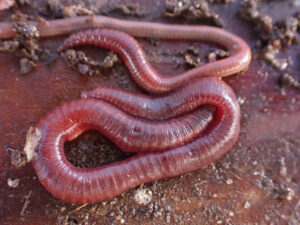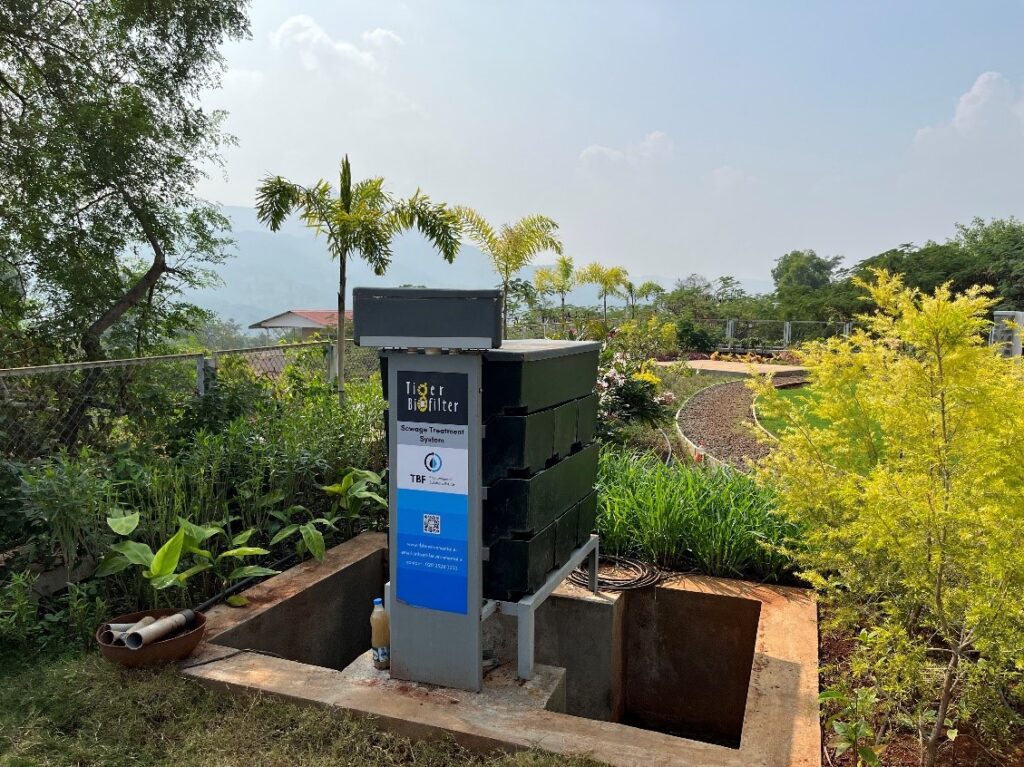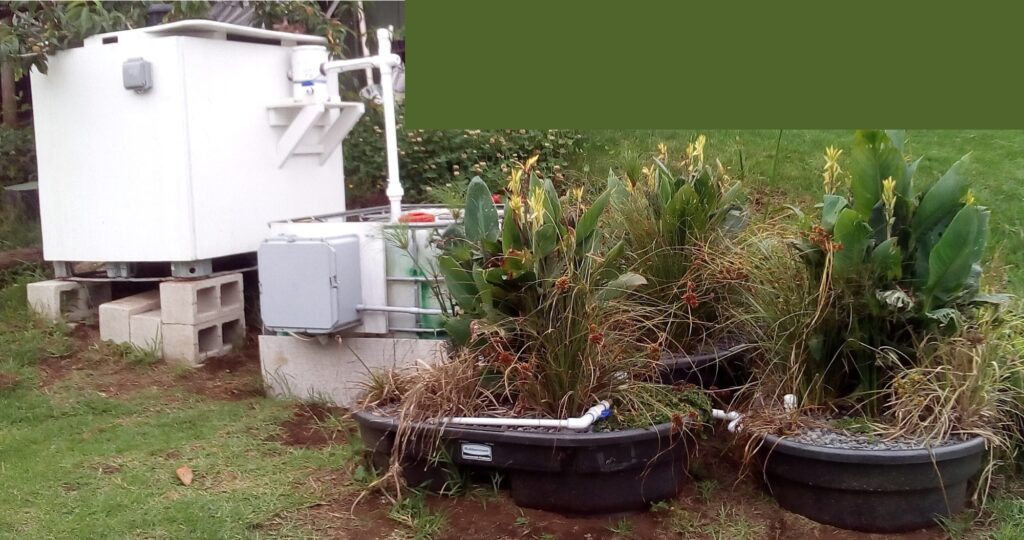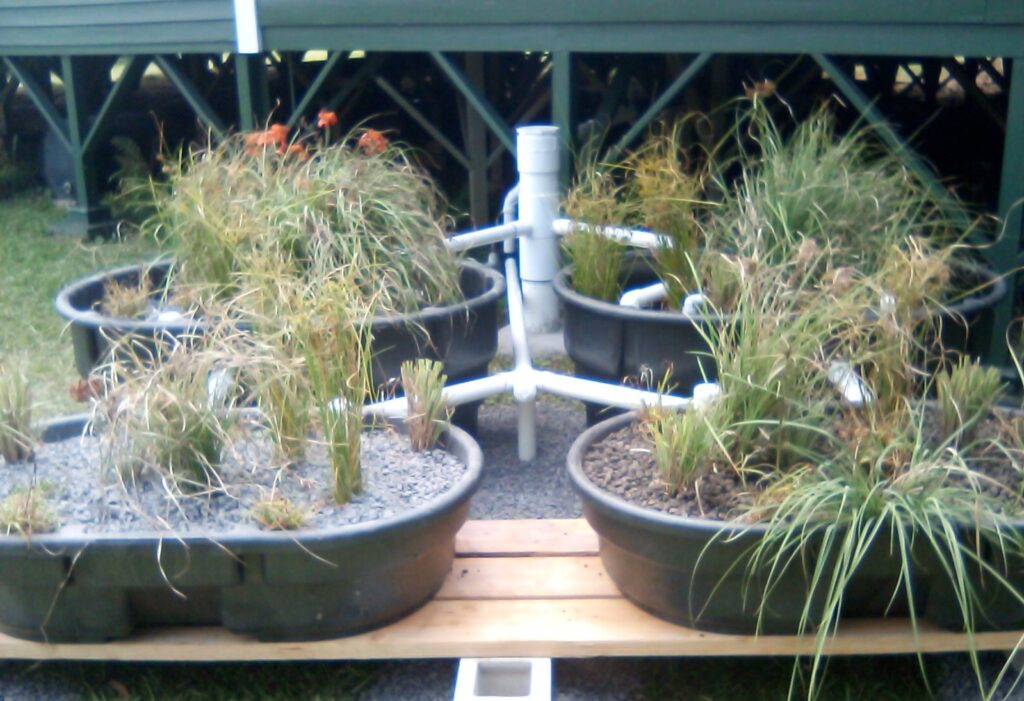Using Worms to Reduce Wastewater Pollution in Hawai‘i
Location
Maui and O‘ahu

Tiger Worms. Photo © Eli T. CC BY 4.0
The challenge
Cesspools are holes in the ground into which raw sewage and wastewater is deposited. They concentrate wastewater deep in the ground where it often comes into contact with groundwater, causing groundwater contamination and impacting human health and the quality of drinking water, water bodies, and coral reefs. Unfortunately, cesspools are the most commonly used method of wastewater and sewage collection in Hawai‘i. While the state banned the construction of new cesspools in 2016, 88,000 cesspools remain in Hawai‘i, and close to half (43,000) of these pose a threat to water resources and water quality across the islands and their watersheds (Hawai‘i Department of Health). According to the Hawai‘i Department of Health (DOH), there are 6,700 cesspools located within 200 feet of a perennial stream channel and approximately 31,000 located within the perennial watersheds on the islands of Hawai‘i, Kaua‘i, Maui, and Moloka‘i. Cesspools in the state release approximately 53 million gallons of untreated sewage into the ground each day. Wastewater can contain a range of pollutants, including sediment, nutrients, pesticides, trace metals, hydrocarbons, pharmaceuticals, and microplastics, which can have significant impacts on the health of Hawai‘i’s residents and visitors, as well as impacts on coral reefs and reef ecosystems. These pollutants can reduce the resilience of coral reefs to climate change and make them more sensitive to ocean warming and acidification (United Nations Environment Programme). In 2017, the Hawai‘i legislature passed Act 125, which requires the replacement of all cesspools in the state by 2050. The default solution to replacing cesspools is to add a conventional septic tank and drainage field to the system; this usually costs between $20,000 and $40,000—an expensive solution that is not accessible to most Hawai‘i residents.
Actions taken
The Institute for Transformative Technologies (ITT) and TBF Environmental Solutions are introducing Tiger Biofilter (TBF) technology to Hawai‘i. The TBF technology uses a combination of earthworms, bacteria, and natural filtration materials to treat wastewater, eliminating 99 percent of fecal pathogens to create reusable, non-potable water. The biofilters use a specific type of composting worm called tiger worms that thrive in moist soil, rotting vegetation, manure, and fecal waste; they efficiently consume pathogens and convert the waste into gas and compost. This process of sewage filtration using biomedia containing earthworms is called vermifiltration. The TBF introduces “passive aeration” to wastewater, which converts the waste into gas and clean, fertile, and odor-free vermicompost. Any excess water filters through the TBF system and enters the existing cesspool as treated wastewater. The target price for a Tiger Biofilter in Hawai‘i is roughly $5,000 (including the cost of installation) per system, which is around 12.5 to 25 percent of the cost of a conventional septic tank.
The TBF technology in Hawai‘i is based on vermifiltration technology that has been successful in India. TBF Environmental Solutions is installing a range of vermifiltration systems in India, including outhouse toilets for rural households, mid-scale systems for apartment buildings, composting facilities for pumped septic sludge, and large-scale municipal sewage treatment plants. The “Tiger Toilet,” well known in rural India, is essentially a vermicomposting toilet installed as part of an outhouse. As of 2023, the Tiger Toilet has been widely implemented in India and the Indian government lists it as an approved option for household sanitation as well as large scale sewage and sludge treatment. To date, TBF has installed over 4,000 Tiger Toilets in India. They have also installed over 20 wastewater treatment plants with capacities ranging from 1,000 liters per day to 1 million liters per day. Additionally, TBF installed several centralized sewage treatment units with vermifilters in Rwanda, East Africa.

Household level (1,000 liters/day) TBF system in India. Photo © Ajeet Oak
In March 2020, ITT installed the first vermifiltration system in the state of Hawai‘i on Maui as a household toilet wastewater treatment system. In this pilot installation, pipes from the home’s two toilets were redirected to the vermifilter tank. The vermifilter tank contains the tiger worms in a biomedia layer, as well as gravel for excess liquid drainage. After wastewater passes through this tank and the solid waste is digested by the tiger worms, liquids drain into a plant bed, which further filters the water, and the treated water then flows into the existing cesspool.

Primary Tiger Biofilter treatment tank (left). After passing through the primary tank, water flows to a plant bed filter (right) for secondary treatment before flowing into the existing cesspool. Photos © ITT
ITT installed an additional pilot project in Kula, Maui, which treats both household gray water and raw sewage. The combined gray water and toilet sewage is a higher volume than the sewage-only system; therefore, this treatment system has an additional collection tank that holds wastewater before it is pumped into the vermifilter. The wastewater slowly trickles into the vermifilter to avoid overwhelming the system with too much liquid. Once the sewage passes through the vermifilter, it flows through additional plant beds for filtration, as illustrated below.

Second pilot installation in Kula, Maui, which treats all household water (toilet water and gray water). Photo © ITT
A third ITT biofilter was installed in Makawao, Maui, in February 2022, which treats only gray water from a household. For the first 11 months of operation, it operated experimentally without earthworms, using only planted gravel beds. Tiger worms were then introduced in January 2023, and initial results suggest the use of worms improved treatment efficacy.

Gray water biofilter in Makawao, Maui. Photo © ITT
How successful has it been?
The household pilot installations in Maui have operated successfully for more than three years. Almost every week, staff from the University of Hawai‘i Maui College have taken samples of the water after it has passed through the filtration system. Staff analyze the samples in the university laboratory and compare results to the National Sanitation Foundation (NSF) standards for onsite sewage treatment systems. As of 2023, the combined wastewater vermifiltration system in Kula (above) is meeting the performance criteria specified by the NSF 40 and 245 onsite sewage treatment standards. NSF 40 and 245 are the most recognized and accepted standards for on-site residential wastewater treatment systems (NSF 2023).
To obtain Hawai‘i government approval for the large-scale implementation of these systems, testing must take place in O‘ahu under the supervision of the University of Hawai‘i at Mānoa following guidelines from the Hawai‘i DOH. ITT has installed a vermifilter designed to treat 400 gallons per day of combined sewage at the sanctioned testing site at Wahiawa Wastewater Treatment Plant on O‘ahu. The system is functioning well, but effluent water quality is currently outside of the acceptable range for Hawai‘i-equivalent NSF certification. This is likely because the wastewater at the sewage treatment plant has been extensively pumped and transported, and organic solids have been broken down into tiny particles that flow through the vermifilter unprocessed. Vermifilters installed at the household scale do not face this problem, as solid waste is more intact and is filtered out in the vermifilter and consumed by worms. ITT is working closely with testing officials to discuss different testing options that may provide more realistic results that are representative of the typical residential use case.
Lessons learned and recommendations
- Make contact early with government regulators to understand the permit approval process. Understanding the regulatory landscape and the requirements for approval is key to widespread implementation of new technology. The Hawai‘i DOH and other Hawai’i government agencies understand that pollution from cesspools is a serious, widespread problem in the state and are looking for alternative solutions. However, the regulatory landscape is complex and there are several decision-makers, which can make the approval process confusing to those who are unfamiliar with it. Making connections with key contacts in the decision-making agencies can be very helpful for implementing new technologies.
- Implement pilot projects where possible. Both the widespread implementation of the TBF technology in India and the successful trials of several different vermifiltration systems in Hawai‘i have shown this technology is effective at treating wastewater and reducing wastewater pollution, if implemented at the right scale.
Funding summary
MacKenzie Scott
Lead organizations
Institute for Transformative Technologies
Partners
University of Hawai‘i Maui College
University of Hawai‘i at Mānoa
Resources
Transformative Technologies Tiger Biofilters
Video: TBF sewage treatment plan with 1 million liters/day capacity


